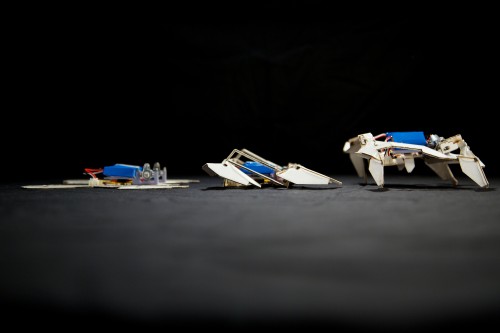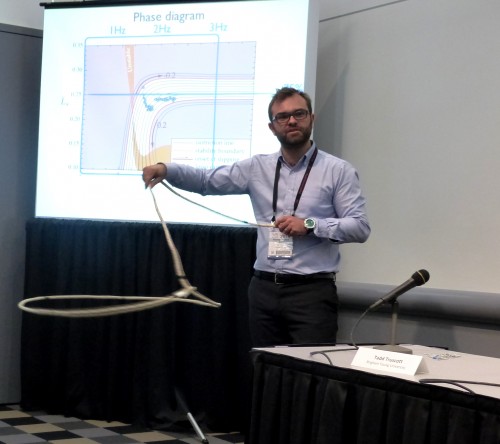Tag archives: robotics
The pin-up of particle physics, an octopus-inspired robot and Witten versus Horgan redux
By Hamish Johnston
One of my favourite radio programmes is The Life Scientific, in which the physicist Jim Al-Khalili talks to leading scientists about their lives and work. Al-Khalili introduces this week’s guest as “the pin-up of particle physics”, whose remarkable career has taken him from playing keyboards in pop bands, to winning a Royal Society University Research Fellowship to do particle physics, to hosting one of the BBC’s most popular science programmes.
Rise of the real transformers, a celestial farewell for your furry friend and more

Ready, steady, go: a profile view of the “transformer” robot. (Courtesy: Seth Kroll, Wyss Institute)
By Tushna Commissariat and Michael Banks
While the latest Transformers film hit cinemas in the UK earlier this month, scientists in the US at Harvard University, along with colleagues at the Massachusetts Institute of Technology, have developed the very first “real life” transformer: a robot that starts out flat, folds and assembles itself into a complex shape and can then crawl away – all without any human intervention. Indeed, these printed robots can self-fold themselves in about four minutes – a huge improvement on previous models that could take up to two hours. They can even turn and naviagte around, making them a handy and practical tool.
Robotic cowboys and clams, the SQUID at 50 and more

Pierre-Thomas Brun shows off his lassoing skills.
By Tushna Commissariat at the APS March Meeting in Denver
It has been another exceedingly busy day the APS March Meeting – there were sessions on the SQUID’s many applications, robotic clams, global health physics and the spread of epidemics, and even some toys based on physics principles. Here’s another quick round-up of the fascinating talks.
On SQUID row
It’s the 50th birthday of the superconducting quantum interference device or SQUID – a very sensitive magnetometer that accurately measures extremely subtle magnetic fields – this year, and there were sessions this morning to discuss its impact to date as well as possible future applications. Kent Irwin from Stanford University discussed how superconducting photon detectors that are used in a host of astronomical and cosmological observations are being amplified using SQUIDs. Such SQUID-boosted sensors are being used to make more accurate measurements of the cosmic microwave background (CMB) – to look at its power as well as certain polarizations modes it exhibits. As certain experiments look for signs of gravitational waves in in the CMB polarization, this could be particularly helpful.
View all posts by this author | View this author's profile